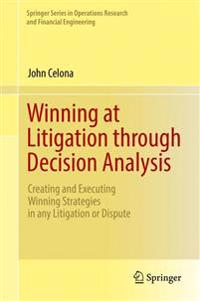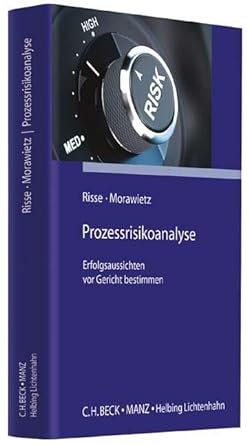Eperoto’s software relies on a theoretical framework often referred to as “Decision Analysis”, “Decision Analysis”, “Litigation Risk Assessment,” and sometimes “Decision tree modeling”. On this continuously updated page, we will share what we hope will become a comprehensive reading list of books, articles, and other materials covering this topic from a dispute resolution perspective. Please don’t hesitate to get in touch if you find that we are missing something specific. If there is a particular article that you are having trouble obtaining, let us know and perhaps we can help you find it (most are available online).
Everything should be made as simple as possible, but not simpler.
Albert Einstein
Some of the books and articles below are written for readers that have none, or very little experience in relying on quantitative models of legal disputes while others articles are very in-depth. Word of advice here: Decision analysis in its most simple form is often the best way to get started.
Not data or AI-based
To avoid confusion: The following list of books and articles concerns assessments and models created with input from the user – and should not be confused with AI-models or “Big-data” models for evaluating cases – even though the input provided in the models can be based on such information.
Books with a focus on decision analysis in dispute resolution
There are quite a few books and articles covering the topic of decision analysis in general (see second list further down). There are however not that many books focusing specifically on decision analysis or litigation risk assessment in a legal context. This first list highlights such books, sometimes followed by a few short comments on their content and their author(s)
Winning at litigation through decision analysis by John Celona

John Celona’s book, the first covering decision analysis in a legal perspective, provides an invaluable understanding of decision analysis inside a legal framework. Packed with examples and exercises, it provides a great intro to someone who wants a broad, and in-depth understanding of risk analysis in a dispute resolution setting.
John Celona is a Stanford affiliated academic and lawyer, who has many years of experience from applying decision analysis in dispute resolution.
Do not miss the three video’s Eperoto has created together with John Celona, that can be found here.
Litigation Interest and Risk Assessment: Help Your Clients Make Good Litigation Decisions by Michaela Keet, Heather Heavin, and John Lande

Years of research and academic articles and practical experience by professors Michaela Keets and Heather Heaving, combined with insights from American lawyer John Lande is here fused into a methodology they’ve named LIRA (Litigation Interest and Risk Assessment).
Published by the American Bar Association, this book provides a well-written approach and understanding of how to perform a thorough analysis by relying on a structured, quantitative analysis.
Risk & Rigor: A Lawyer’s Guide to Decision Trees for Assessing Cases and Advising Clients by Marjorie Corman Aaron

Ohio-based scholar, lawyer and mediator Marjorie Aron has written and published this book – a result of years of studies and articles on the topic. Available online for free, you will find several practical examples. A great way to get a research-based and practical view on litigation risk assessment.
Books focusing on decision analysis in general
The earliest published books covering decision analysis do not have a specific legal focus, but are still valuable for the lawyer who is interested in diving deeper into the methods and tools of the trade, and they often contain examples from a dispute resolution setting.
Decision Analysis for the Professional by John Celona and Peter McNamee

Foundations of Decision Analysis by Ali E. Abbas and Ronald A. Howard

Negotiation Analysis: The Science and Art of Collaborative Decision Making by Howard Raiffa,John Richardson and David Metcalf

Books in languages other than English
Below follows a list of books written in languages other than English. If you know of any more books covering this topic, don’t hesitate to reach out and let us know.
Prozessrisikoanalyse Erfolgsaussichten vor Gericht bestimmen, by Jörg Risse (German)

Probably the only comprehensive book on the topic in German.
Avtals- och tvistlösningsförhandling, by Eric M. Runesson (Swedish)

Written by lawyer, Supreme court judge, and member of the Swedish Academy and Nobel Committee for literature Eric M. Runesson, this book provides a great understanding and practical examples on strategies that can be applied in dispute resolution negotiations. The book also covers quantitative analysis in the context of Swedish law.